How To Add Music To Wordpress Blog
Including audio content on the internet is a given. Music producers, artists, voice actors, and other professionals make good use of web audio. If you're a music professional looking to share your work, WordPress has an array of solutions to cater to you.
You can audio to WordPress site very simply. The platform not only lets you upload various audio file formats, but also lets you create playlists for your site visitors to enjoy. Furthermore, there are several plugins in the WordPress repository that can expand your WordPress site's audio functionality.
In this article, we'll show you the different methods you can use to add audio files to your site. We'll then share some WordPress audio player plugins we recommend. Let's get to it!
Why You'd Want to Add Audio To WordPress
Though not as prevalent as video content today, audio is an equally effective way of getting your message across to your audience. However, the most important thing to consider before adding audio to your site may be its appropriateness.
In the past, there have been debates about the place of audio on the internet, although it's always subjective. However, in a nutshell, web audio works where the target audience expects to find it. Common suitable use cases of audio on websites include:
- Music production sites. This type of site includes multiple tracks of audio arranged into a single timeline, such as Soundation. It's essentially a Digital Audio Workstation (DAW) within the browser.
- Online musical instrument retail stores. In this case, you can add audio samples to demonstrate the type of sound your products generate.
- Online gaming with sound effects. Sound can be very useful in bringing online games to life. In fact, audio is often just as vital for gaming as the visuals.
- Podcasts and online radio broadcasts. You may want to add recorded sessions of your programs and also stream them live.
- Musical band or artist websites. You would normally want to sell your tracks on popular platforms such as Bandcamp, Apple Music and Spotify. However, you can always add on-site samples to give your fans a taste of what to expect on your albums or singles.
In each of these cases, it is almost impossible to do without audio. In essence, incorporating sound effectively on your website can literally be 'music to your users' ears'.
The File Types You'll Come Across When Adding Web Audio to Your Site
The internet was originally all about text and information. However, it didn't take long before we were able to add and express some artistic creativity online.
When Microsoft released Internet Explorer 2 in 1995, it was accompanied by support for sound, called 'bgsound'. Though it mostly turned out to be a perfect example of poor web sound integration (due to background autoplay,) the new addition enriched the internet all the same.
Internet Explorer's competitor at the time, Netscape, later developed a more powerful solution known as the 'embed tag,' which let users embed multimedia directly into a webpage. Both solutions made use of Musical Instrument Digital Interface (MIDI) files.
Though MIDI files were great, the technology had its limitations. Apart from the fact that it generally couldn't store vocals, the achievable sound quality wasn't realistic enough. The advent of the Flash plugin in 1996 paved the way for users to play audio files when required.
Today, the range of available options is wider than ever. The Waveform (WAV) and Audio Interchange File (AIF/AIFF) formats are some of the most common uncompressed audio file types on the internet. Originally developed as the standard audio formats for Windows and Macintosh respectively, they are great for storing lossless high-quality audio, if relatively huge in file size compared to other formats.
Lossless audio files could also be Free Lossless Audio Codec (FLAC), Apple Lossless (ALAC), and Monkey's Audio (APE). Other common web audio file types you could encounter include the famous MPEG Audio Layer-3 (MP3), Advanced Audio Coding (AAC), and Windows Media Audio (WMA).
There are tons of other options available for you to consider. However, the likes of the MP3 are an ideal fit for web usage because they maintain a balance of decent quality and a reasonable size.
The Future of Web Audio
It is almost impossible to talk about the future of web audio without making a mention of the Web Audio Application Programming Interface (API). Though the <audio> element in HTML5 is a great step forward, the Web Audio API could be even better.
It is a constantly evolving JavaScript API for processing and synthesizing audio online. This will let you fully replicate desktop audio production features such as filtering, mixing, processing, and more. The API relies on 'audio nodes,' which are linked by their inputs and outputs. All of these audio operations are carried out in a dedicated 'AudioContext' interface.
As a site owner, this technology makes a lot of functionality accessible to you. Apart from being able to incorporate audio into your site or provide auditory feedback to users, you can also create advanced interactive instruments. Other functionalities to look forward to include sound crossfading, playlist crossfading, and applying a simple filter effect to a sound.
The Do's and Don'ts Of Using Web Audio on Your WordPress Website
We've established earlier how including web audio on your site can be a tricky decision to make. To be able to use sound effectively, there are some factors to consider. You may want to examine how it will affect your page's performance, whether your users will find it appealing, and if the context is right.
In most cases, if you can do without sound, excluding it may be the right move. While the choice is yours, there are certain absolutes to remember if you finally decide to use audio on your WordPress site. Here are some of them:
- Don't add background music to your web pages. As a web designer or site owner, you may be tempted to use some background music to 'set the tone' on your website. As appealing as it may seem, it's not great for a performance standpoint, or for User Experience (UX.) Quality music files are typically heavy, and having to download them each time a user loads a page will eat up your bandwidth and slow down your page.
- Always let users turn audio on or off. This is another UX consideration that was once prevalent. However, defaulting to 'Off' and giving the user the choice is the best approach.
- Use royalty-free sound, unless you've created it yourself. You can consult a variety of sources for high-quality royalty-free music. Sticking to this rule will help to increase your site reputation.
WordPress makes audio incorporation really easy. There are a number of plugins available to maximize this functionality. Let's take a quick look at some of them.
3 Great Audio Plugins to Use on Your WordPress Site
By default, WordPress lets you add audio files to the Media Library. (We'll show you how to go about this shortly). However, if you're looking for more 'audio punch', you will find a good number of plugins available in the WordPress repository. Based on feature set, here are three of the best of WordPress audio plugins.
1. PowerPress Podcasting Plugin by Blubrry

The first plugin we'll be considering on this list is a podcasting plugin with an extensive set of features, and a high reputation to boot. As the name implies, the plugin is specially targeted towards podcasting, and it's arguably the best available.
Apart from adding podcasts to your site, PowerPress excels in one of the most important aspects of podcasting – promotion. You can seamlessly submit your episodes to Spotify, Apple Podcasts, Stitcher, TuneIn, and Google Podcasts. There's also room to create Subscribe pages and manage your Search Engine Optimization (SEO).
If you're completely new to audio plugins, PowerPress offers a step-by-step guide to creating your first podcast. Additionally, you can track your podcasts, embed audio or integrate a media player in your posts and pages, and create podcasts with categories, types, and taxonomies.
While the plugin is free to use, you'll need to pay $5/month for the Professional Podcast Statistics which offers you detailed performance reports. Other paid plans include Podcast Media Hosting and Full Podcast Solution starting at $12/month and $32/month respectively.
PowerPress is clearly optimized for podcast creators and users. However, other users can still take advantage of its more generic features. Another podcasting plugin that comes really close is the Smart Podcast Player.
2. AudioIgniter

AudioIgniter is another audio plugin you may find useful. Created by the CSSIgniter team, the plugin concentrates more on adding playlists to your WordPress site. It is easy to set up and use.
When you install AudioIgniter on your WordPress site, it automatically adds a Playlists tab to your dashboard. To create a new playlist, hover over the tab and click Add Playlist in the drop-down menu that appears. Then, you can easily add as many playlists as you'd like:
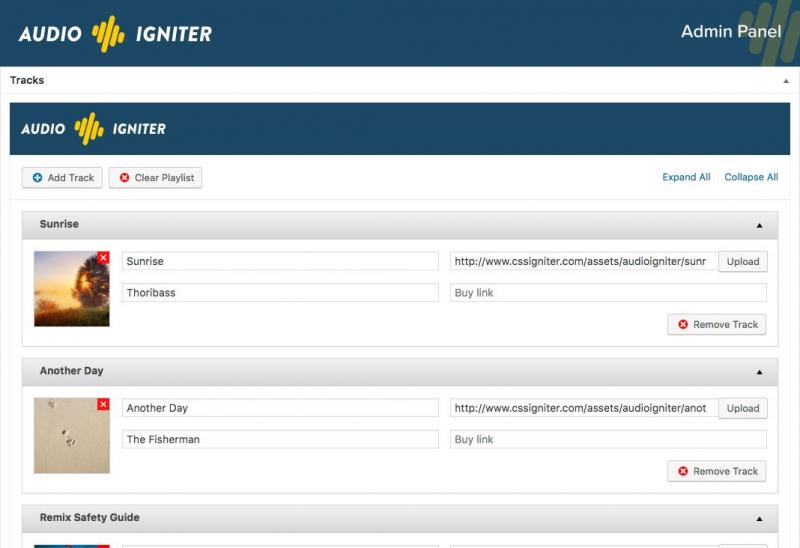
In the playlist editor, not only can you add as many tracks as you want, but you can also fill in information about the name of the songs and artists. Once you're done editing, simply copy the shortcode and paste it on any post or page you want it to appear on.
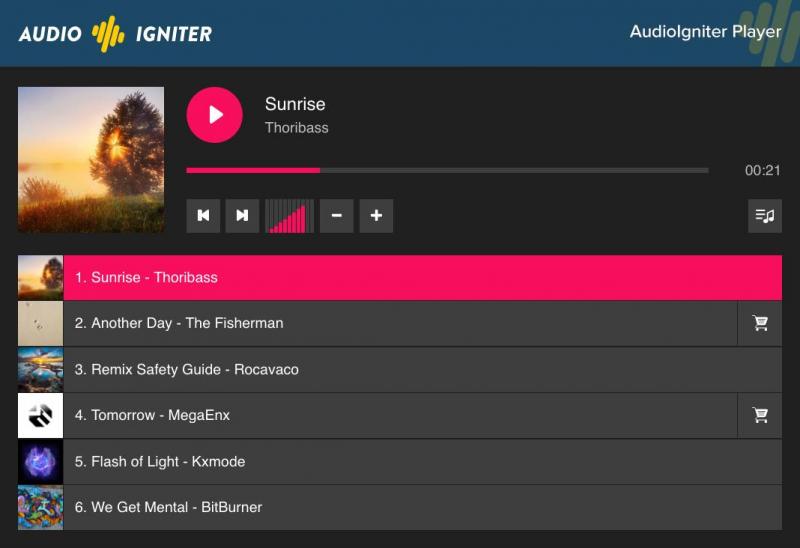
If you're looking to sell music from your site, AudioIgniter may be the tool you need. The plugin integrates smoothly with WooCommerce, making it possible to sell your music digitally. You can even include a custom Buy Now field to further ease the process of selling your tracks.
For more extensive features, you may want to upgrade to the Pro version. Though the free version lets you add individual settings to each playlist, you get even more functionality by going premium. You can move several tracks into a playlist with the bulk upload feature, tweak the player's position on a page, and also customize the color of the player.
A pro license will set you back a one-time fee of $49. The features you get make it an ideal option for any WordPress user that works regularly with playlists.
3. Audio Album

Audio Album is decidedly streamlined compared to the other two plugins mentioned above. However, the tool makes it to our list because of its solid customization options. If you're all about how your tracks appear on your site, you may want to consider this option.
Just like PowerPress and AudioIgniter, Audio Album lets you set simple music details such as artist name and album title. However, if you also want to tweak the size and style of the player, the plugin has you covered. Interestingly, you can achieve all of these right from within the theme customizer.
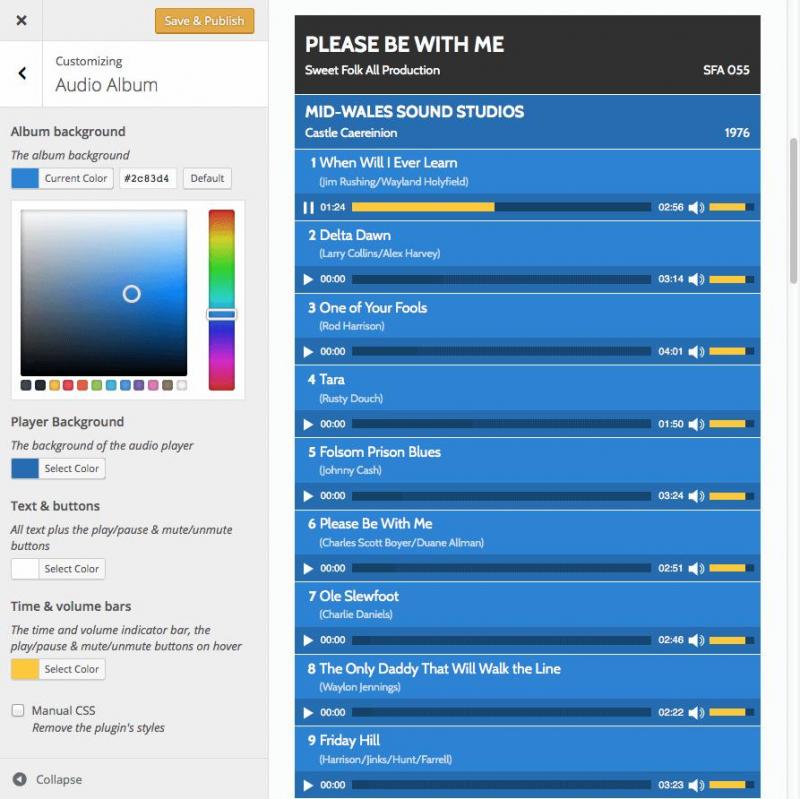
The plugin is highly intuitive and easy to use. Also, if you're good with shortcodes, you can customize your audio player even more:
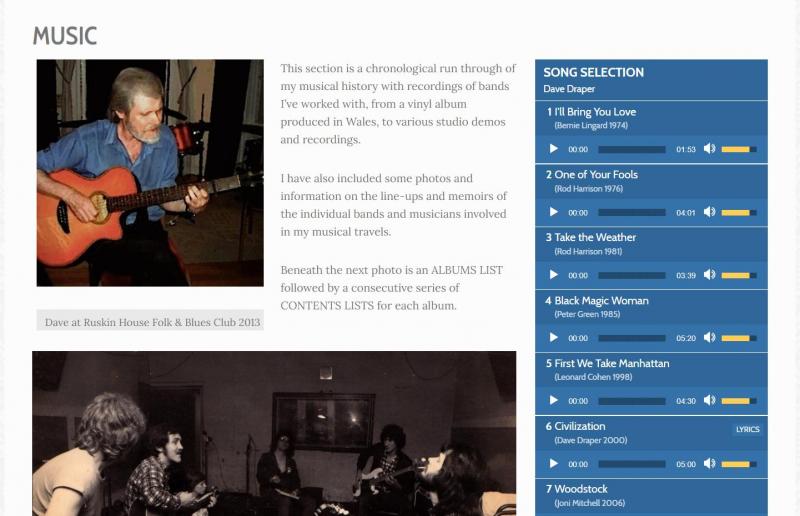
The tool is completely free to use and supports practically all of the major audio file formats.
How To Embed Audio In WordPress (Using 3 Methods)
There are a number of ways you can add audio files to your WordPress site. Thanks to HTML5, you can now easily embed audio with WordPress . Using simple straightforward processes, you get a media player that is compatible with the majority of browsers and devices. Let's consider the most popular methods that are available to you.
1. Use WordPress' Native Media Uploader
This is the easiest way to add audio files to your WordPress site. It should be your first resort if all you want to do is add audio to your site. To use this method, simply navigate to Media > Add New in your WordPress dashboard.
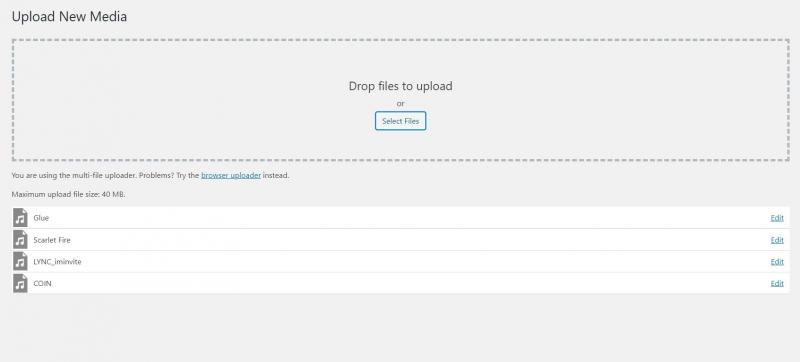
WordPress's native multi-file uploader enables you to add as many files as you'd like simultaneously. You can also add audio files directly to your posts and pages while editing them. The Block Editor includes an audio block you can use to upload files directly from your computer, the Media Library, or even insert from a URL.
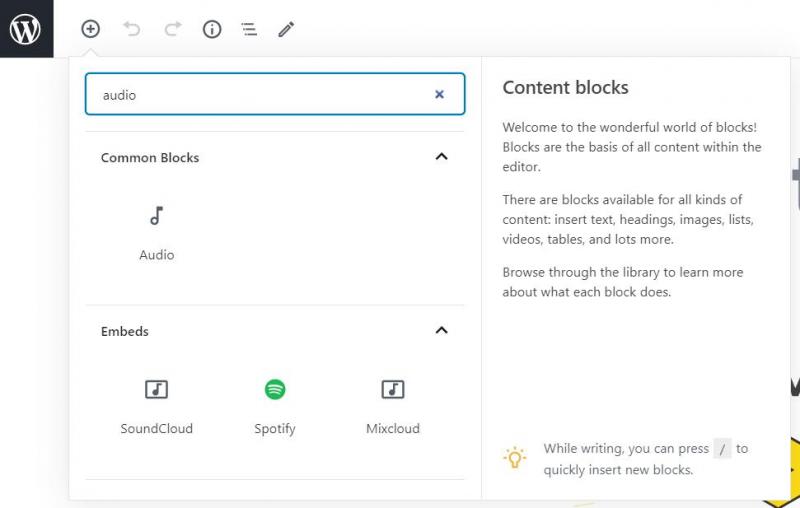
In the Media Library, you can edit some of the track's metadata before publishing it, and add further options by tweaking the CSS code. It doesn't have the most extensive features, but it's about the fastest way to get an audio file up on your site.
2. Embed Audio With a Music Service Such As SoundCloud
If you start to add lots of audio files to your WordPress site, hosting them on your own server may no longer be the best option. This will take up a large chunk of your storage space and may eventually affect your site's performance. The workaround to this is to host your audio files on a third-party music service.
A good example of this service is SoundCloud. It is a popular music sharing service, and is often likened to as the 'YouTube' for audio. You can use SoundCloud to host those songs you're intending to add to your website. Alternatively, you can simply embed existing SoundCloud content into your website.
Here's how to embed SoundCloud in WordPress. To di this, click on the Share button while playing a track on SoundCloud. In the pop-up menu that appears, toggle to the Embed tab and you will find the WordPress code you need in the box below.
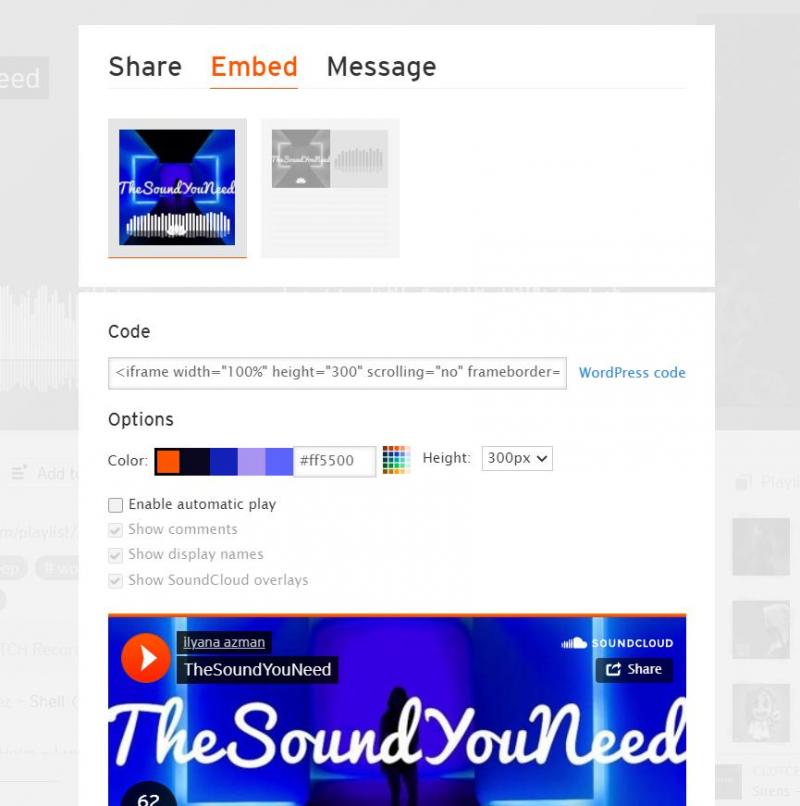
Copy this code and paste it in the text or code editor in your WordPress post or page. Before copying the code, you can change some options such as the playlist color and height. Likewise, you can enable or turn off autoplay Soundcloud.
Unfortunately, third-party SoundCloud WordPress plugins are thin on the ground. Our recommendation is to test out a solution thoroughly before going live, so that you know that the plugin works with the latest WordPress version. WordPress also supports other popular audio libraries including Spotify and Audiomack.
3. Use a WordPress Audio Player Plugin
Apart from adding audio files and playlists directly to your site, or embedding them using an API or third-party plugin, there are certain WordPress plugins you can use to extend your site's audio capabilities. Most of these plugins are often niche-specific.
While some focus on podcasts – such as the aforementioned PowerPress – others are more targeted at creating playlists. Nonetheless, you can still find some multi-purpose plugins.
Apart from the plugins we mentioned earlier, you can also consider other options such as Compact WP Audio Player, Seriously Simple Podcasting, and Cue:

The last is particularly impressive, as it's a stylish site-wide music player that is great for single tracks or playlists:
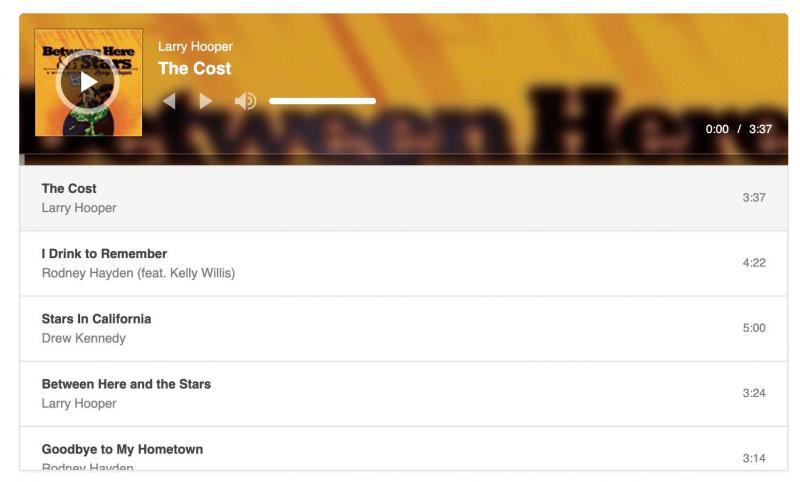
It's also customizable, and there are plenty more features accessible through the premium version.
Audio Hosting Sites Conclusion
Musicians, podcasters, churches, and many others will find WordPress's numerous web audio capabilities handy. You can add multiple music file types and playlists to your website in a straightforward way, without a complex and time-consuming process.
To cap it all off, let's quickly take another look at the three methods you can use to add web audio on your WordPress site:
- Use WordPress's native media uploader.
- Embed audio with a music service such as SoundCloud.
- Use a WordPress audio player plugin.
Are you looking to build a WordPress music website of your own? You may want to consider our Managed VPS hosting plans with robust server resources to cater to all of your audio hosting site your needs.
Image credit: whoalice-moore.
How To Add Music To Wordpress Blog
Source: https://www.a2hosting.com/blog/using-audio-files-wordpress-site/
Posted by: martincongs1974.blogspot.com

0 Response to "How To Add Music To Wordpress Blog"
Post a Comment